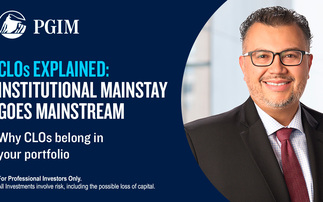
The Paris Agreement set out to keep the global temperature rise well below 2°C by 2050, ideally 1.5°C, to reduce the most catastrophic consequences of climate change. To achieve this, it introduced the concept of net zero: balancing greenhouse gas emissions with removals [1]. This flexibility was designed to help countries and industries decarbonise while developing new technologies to remove emissions.
Achieving net zero is difficult in a fragmented world. Particularly when countries' own plans, or Nationally Determined Contributions (NDCs), vary widely in ambition, scope and timing, transitions can be challenging both economically and technologically. As a result, reaching net zero is proving more complex than could have been hoped under the Paris Agreement.
Decarbonisation: what the science and technology tell us
Net zero does not mean absolute zero emissions. Scientific consensus, including pathways modelled by the IPCC [2] and IEA [3], shows that cutting energy system emissions by approximately 87–97% by 2050 is necessary to meet the Paris goals. At the same time, unmitigated emissions, whether from energy systems or other processes, such as natural systems or hard-to-abate sectors, must be offset using permanent carbon removal strategies.
Our approach to stewardship and investment strategies that consider net zero align with scientific consensus and the Oxford Principles for Net Zero Aligned Carbon Offsetting.
Our approach to stewardship and investment strategies that consider net zero align with this scientific consensus and the Oxford Principles for Net Zero Aligned Carbon Offsetting. This prioritises emissions reductions first and allows for a limited number of long-lived removals to address residual emissions. This approach ensures integrity and transparency while enabling progress in sectors where full decarbonisation is not yet technically or economically feasible.
Bringing it all together: mitigate and adapt
The geopolitical fragmentation and the high cost of carbon removals present real obstacles to reaching net zero.
Different decarbonisation pathways and their physical climate impact could have different outcomes on asset values and risk profiles.
For investors, this means that the transition to a low-carbon economy may not be linear. Different decarbonisation pathways and their physical climate impact could have different outcomes on asset values and risk profiles. For example, a rapid shift to renewables without adequate infrastructure can lead to curtailments, unintended reliance on fossil fuels, or even blackouts. On the other hand, delaying investment in renewables may drive up costs elsewhere, such as in climate adaptation or carbon capture technologies.
As a member of the Bank of England's Climate Financial Risk Forum, we find the Aim-Build-Contingency (ABC) framework a useful reference [4]. This includes scenario planning aligned with different temperature outcomes by 2050 and promotes approaches that ‘aim' for 1.5°C, ‘build and budget' for 2°C and have ‘contingency' planning for 2.5°C. We support this strategy through our evolving thinking about scenarios and our stewardship practice.
[1] Removals refer to actions that pull these emissions out of the atmosphere for good (e.g. carbon capture and storage)'
[2] The Intergovernmental Panel on Climate Change (IPCC) is the UN body that assesses climate science to inform global policy and action.
[3] The International Energy Agency (IEA) is an intergovernmental organization that provides data, analysis, and policy advice to support global energy security and the transition to clean energy.
[4] CFRF: Mobilising Adaptation Finance to Build Resilience
For professional investors only. This material is not suitable for a retail audience. Capital at risk. This is a financial promotion and is not investment advice. Past performance is not a guide to future performance. The value of investments and any income from them may go down as well as up and is not guaranteed. Investors may not get back the amount invested. Portfolio characteristics and holdings are subject to change without notice. The views expressed are those of the author at the date of publication unless otherwise indicated, which are subject to change, and is not investment advice.












